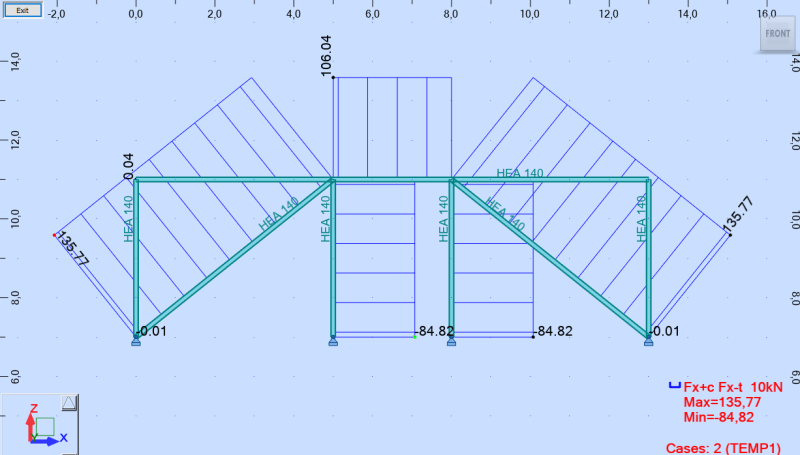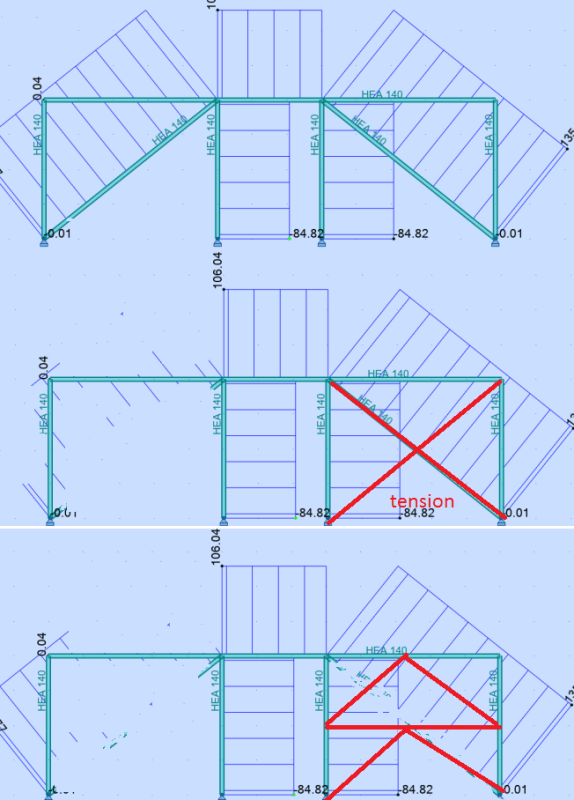Hello Folks!
I am a big fan of this forum, read a lot, but this is my first thread
I did some small forum search on thermal action but couldn't find proper thread.
My point of focus are industrial structures (not pipe racks) exposed on ambient temperature change (day/night/seasonal).
I am talking about eg. support structures for heavy equipment like silos, filters, condensers etc.
The basic thing is that all of those structures are exposed on ambient temp change. In Europe where I live (according to Eurocode) assembly temp equals 8C degreed. Winter -30, Summer +30. Temp change delta -38/+22. For stiff, well braced structure it generates huge normal forces in members + some significant pulling and horizontal force on foundations (bracing bays).
The issue with pipe racks is quite simple. They are designed to allow deformation etc. but what are your engineering good practices for structures that should be stiff and strong enough to carry a lot of equipment load (weight, wind).
Some projects I have seen had an assumption that structure has a capacity to slip on a bolt connections and compensate thermal expansions but I do not buy it. On the other hand normal force from temp looks ridiculously big for bracing members and beams which cannot deform due to bracing bays.
I would be grateful for some assist and your experience share.
Thank you!
I am a big fan of this forum, read a lot, but this is my first thread
I did some small forum search on thermal action but couldn't find proper thread.
My point of focus are industrial structures (not pipe racks) exposed on ambient temperature change (day/night/seasonal).
I am talking about eg. support structures for heavy equipment like silos, filters, condensers etc.
The basic thing is that all of those structures are exposed on ambient temp change. In Europe where I live (according to Eurocode) assembly temp equals 8C degreed. Winter -30, Summer +30. Temp change delta -38/+22. For stiff, well braced structure it generates huge normal forces in members + some significant pulling and horizontal force on foundations (bracing bays).
The issue with pipe racks is quite simple. They are designed to allow deformation etc. but what are your engineering good practices for structures that should be stiff and strong enough to carry a lot of equipment load (weight, wind).
Some projects I have seen had an assumption that structure has a capacity to slip on a bolt connections and compensate thermal expansions but I do not buy it. On the other hand normal force from temp looks ridiculously big for bracing members and beams which cannot deform due to bracing bays.
I would be grateful for some assist and your experience share.
Thank you!


